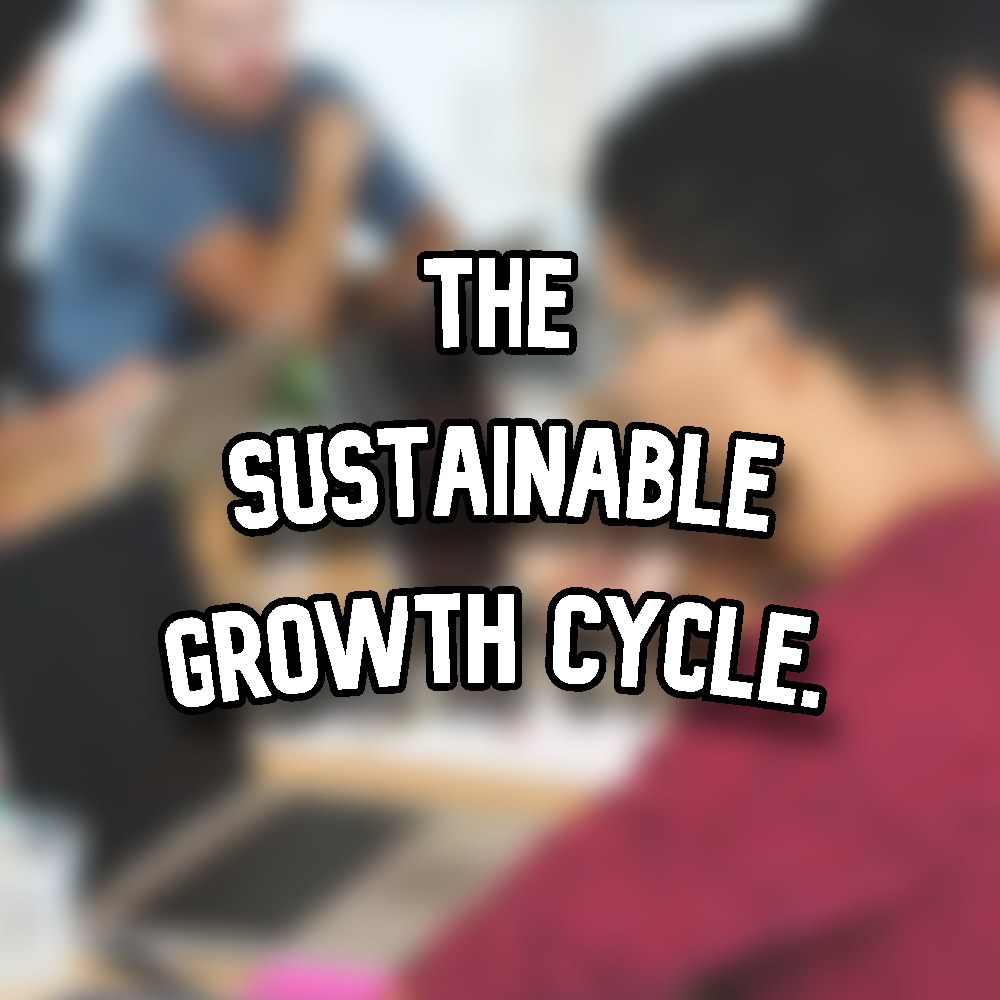
It is a complete mistake to assume that a system can grow infinitely without causing any problems. The truth is, at a certain point, it will inevitably start causing problems. This concept is evident in many aspects of life, from biology to business.
Take, for instance, our own bodies. Cells grow to a certain size and multiply at a rate that ensures newly created cells replace old cells that die. This regulated growth is essential for maintaining health. However, what happens if this growth and multiplication become uncontrolled and disproportionate? It threatens the existence of the entire system. These cancerous cells must be removed, or they will destroy the whole body.
This example, though biological, is highly relatable to business. A business, like any other system, can only expand to a finite extent. Beyond that point, a business must focus on stabilizing its growth to prevent unsustainable practices that can lead to failure.
This is where the concept of a sustainable growth cycle becomes crucial. The growth cycle in a business typically comprises three phases:
- Expansion.
- Maintenance
- Consolidation.
Expansion
During the expansion phase, the primary focus is on growth. New products are developed and tested, and new markets are explored. This phase is characterized by experimentation and risk-taking, with the goal of increasing market share and revenue. Companies invest heavily in research and development, marketing, and sales to drive growth.
Maintenance
Next is the maintenance phase, where the emphasis shifts from creating new value to executing the current plan efficiently. The focus here is on marketing, sales, and adding value to existing products and services. Companies strive to optimize their operations, enhance customer satisfaction, and maintain the gains achieved during the expansion phase. This phase ensures that the business does not overextend itself and can sustain its growth without compromising quality or customer trust.
Consolidation
Finally, in the consolidation phase, the company takes a step back to analyze its performance. This phase is about reflection and refinement. What’s working well? What’s not? Anything that is not contributing to the company’s goals or is causing inefficiencies gets cut out. This phase is crucial for identifying strengths and weaknesses and making necessary adjustments to strategies and operations. It’s a period of learning and improvement that sets the stage for the next cycle of growth.
This cyclical approach to growth applies to many systems beyond business. For instance, ecosystems go through periods of growth, stability, and renewal. Economic systems experience cycles of expansion, recession, and recovery. The key is understanding that each phase—expansion, maintenance, and consolidation—is vital for long-term success and sustainability.
A business that is fixated solely on expansion and short-term goals risks undergoing cancerous growth, akin to uncontrolled cell division. Such growth is unsustainable and can lead to the business’s eventual downfall. Understanding that maintenance and consolidation are as crucial as expansion is essential for healthy business cycles. Recognizing and respecting each part of this cycle ensures that a business can achieve long-term success and stability.
In conclusion, infinite growth is not only unrealistic but also dangerous. Businesses must follow a sustainable growth cycle to thrive. By balancing expansion with maintenance and consolidation, businesses can avoid the pitfalls of uncontrolled growth and ensure their longevity and prosperity. This balanced approach to growth is the key to building resilient and successful enterprises.